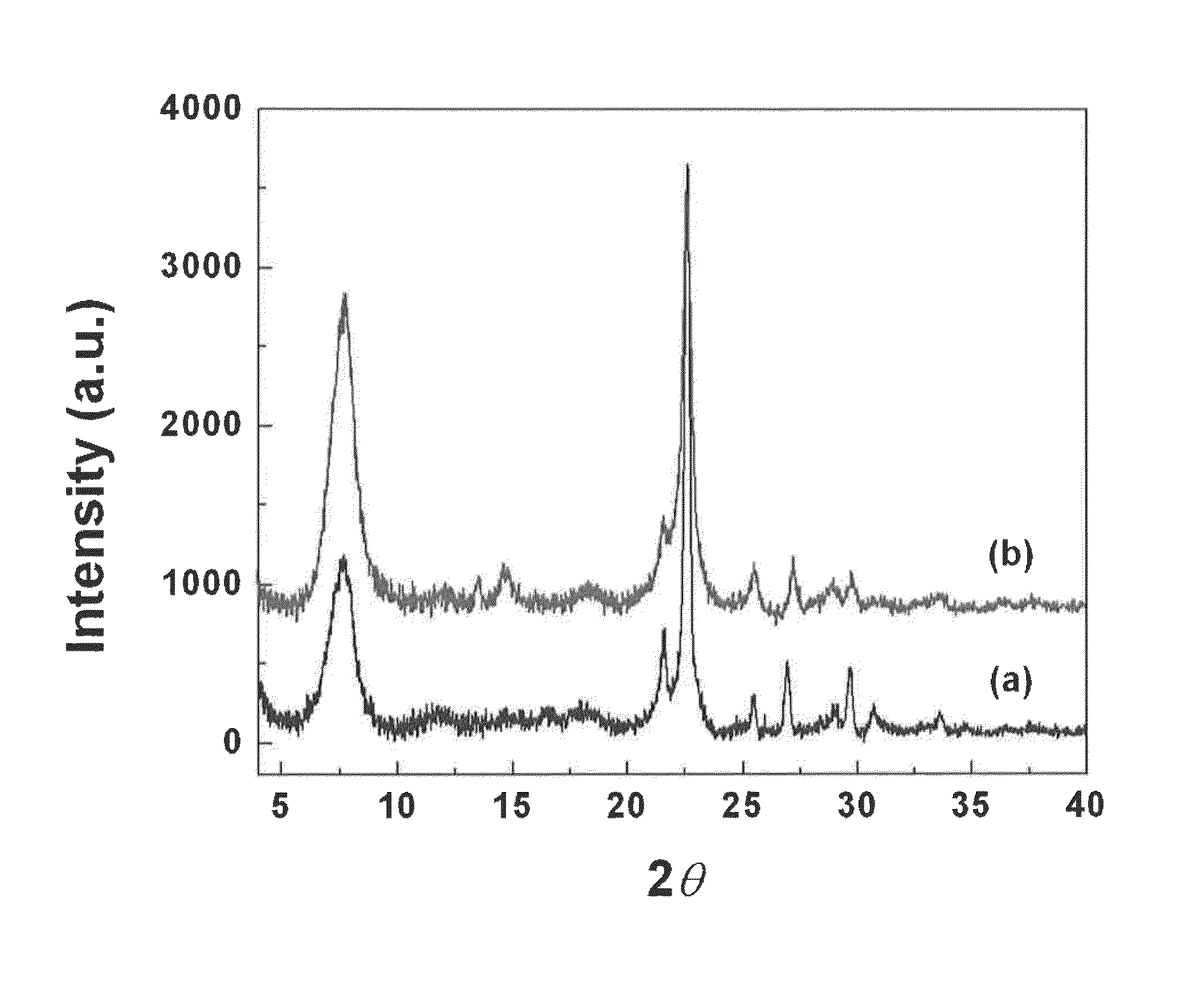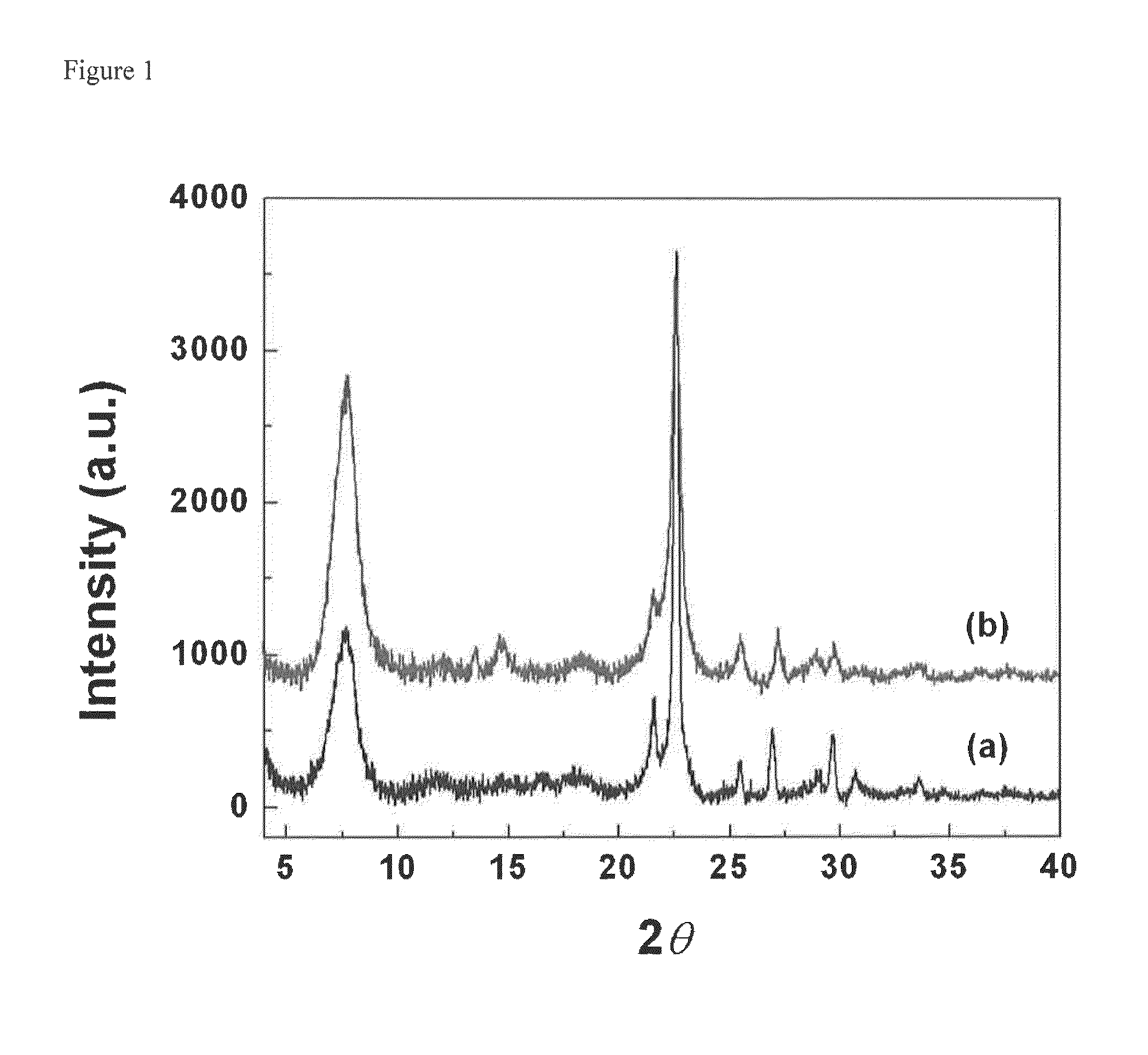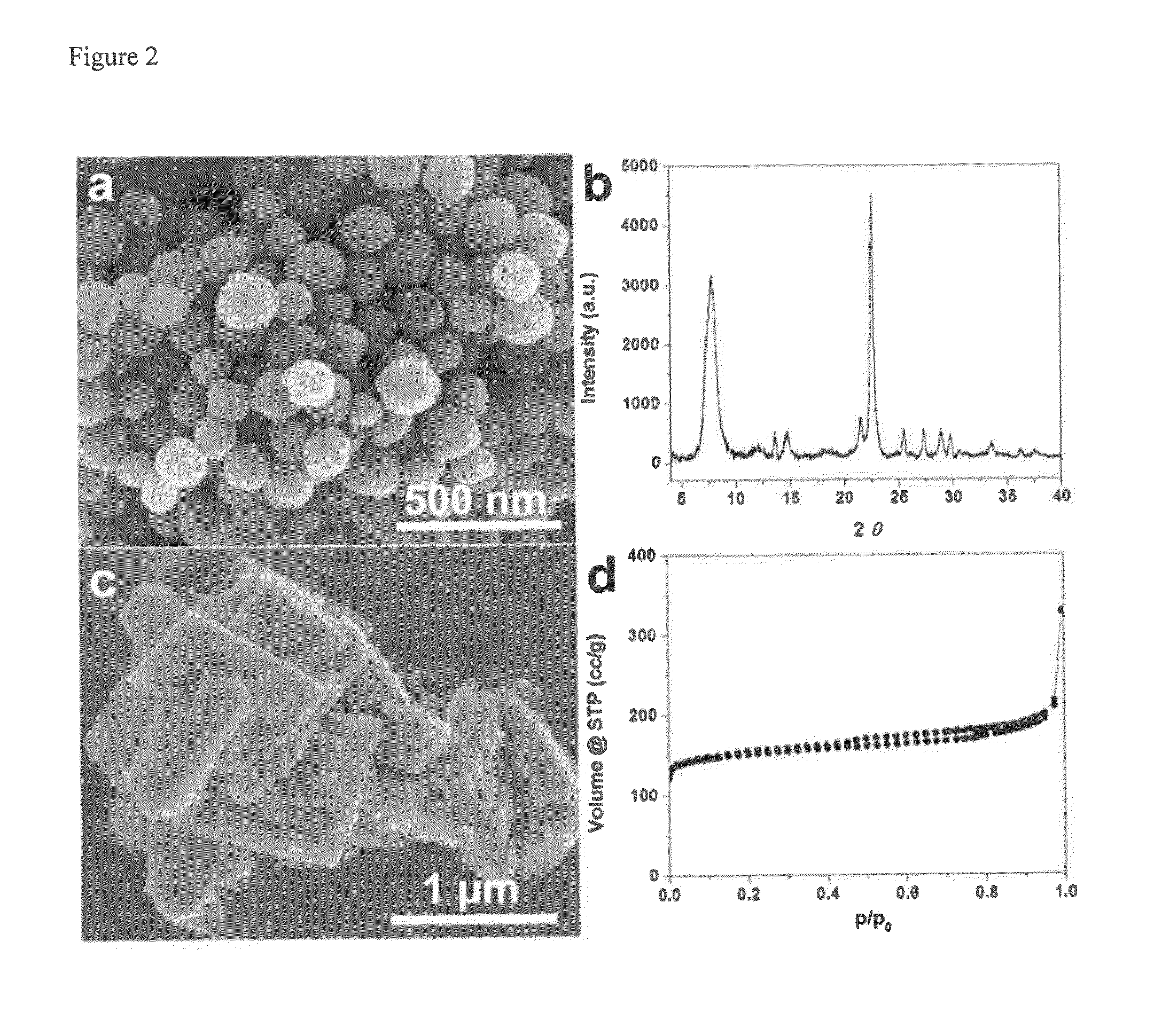Rapid synthesis of beta zeolites
- Summary
- Abstract
- Description
- Claims
- Application Information
AI Technical Summary
Benefits of technology
Problems solved by technology
Method used
Image
Examples
example 1
Synthesis and Characterization
[0046]Preparation of Seed Solution
[0047]0.1 g of sodium hydroxide (≧98%, Aldrich) were dissolved in 11.83 g of tetraethylammonium hydroxide solution (TEAOH, 35%, Alfa Aesar), followed by drop wise adding 17.85 g of Ludox HS-30 colloidal silica (30%, Aldrich). After dissolving LUDOX HS-30 at room temperature, 0.365 g of aluminum isopropoxide (Aldrich) were added into the solution. The composition of the solution was 25 SiO2:0.25 Al2O3:9 TEAOH:0.35 Na2O:331 H2O. The mixture was aged for 1 day at room temperature and filtered with a 200 nm syringe filter to obtain a clear solution. The clear solution was charged into a Teflon-lined stainless steel autoclave, and heated at 100° C. for 7 days in a preheated oven. The formed zeolite nanocrystals were collected by centrifugation and repeatedly washed by deionized water until the pH is blow 7. Finally, the aluminosilicate zeolite beta nanocrystals were re-dispersed into deionized water without drying. The cryst...
example 2
Catalytic Tests
[0055]All the chemicals (xylose, glucose, dihydroxyacetone dimer and methanol) used in the reactions were purchased from Sigma-Aldrich.
[0056]Isomerization of Glucose
[0057]A glucose isomerization reaction was used to test the catalytic activity of the synthesized Sn-Beta catalyst. The reaction was performed according to the work of Moliner et al. (Proc. Natl. Acad. Sci. USA, 2010, 107:6164-68). Sn-Beta was added at a 1:50 Sn:glucose molar ratio to a 10 wt % glucose solution in a 3 mL thick-walled glass reactor. The reaction vial was placed in a temperature-controlled aluminum heating block set to 90° C. with 500 rpm stirring. After reaction for various times, the glass reactors were quenched in ice for 15 min, dried, and weighed before opening to make sure there was no leaking during the reaction.
[0058]Isomerization of Xylose
[0059]The isomerization of xylose was performed according to the work of Choudhary et al. (ACS Catal., 2011, 1:1724-28). Sn-Beta was added at a 1:...
example 3
Reducing Crystallization Time to 6 Hours by Increasing Crystallization Temperature
[0073]Using the same compounds and sample preparation method as described above in Example 1, the crystallization time for the synthesis of hydrophobic Sn-Beta has been further reduced to 6 hours by increasing the reaction temperature. Fully crystalline Sn-Beta zeolite was obtained in 12 hours and 6 hours when the synthesis temperature is 175° C. and 200° C., respectively. The significantly enhanced crystallization rate is ascribed to the well dispersed beta zeolite seeds with high crystallinity as observed in Example 1. The structure directing agent (SDA) used in the synthesis is tetraethylammonium hydroxide (TEAOH). In the synthesis system, Hofmann elimination reactions of TEAOH forming lighter amines is avoided since the pH of the synthesis solution is close to neutral. The crystallization temperature was increased from 140° C. to 200° C. High-quality Sn-Beta was achieved in 6 hours. FIG. 11 shows t...
PUM
| Property | Measurement | Unit |
|---|---|---|
| Temperature | aaaaa | aaaaa |
| Temperature | aaaaa | aaaaa |
| Fraction | aaaaa | aaaaa |
Abstract
Description
Claims
Application Information
 Login to View More
Login to View More - R&D
- Intellectual Property
- Life Sciences
- Materials
- Tech Scout
- Unparalleled Data Quality
- Higher Quality Content
- 60% Fewer Hallucinations
Browse by: Latest US Patents, China's latest patents, Technical Efficacy Thesaurus, Application Domain, Technology Topic, Popular Technical Reports.
© 2025 PatSnap. All rights reserved.Legal|Privacy policy|Modern Slavery Act Transparency Statement|Sitemap|About US| Contact US: help@patsnap.com



